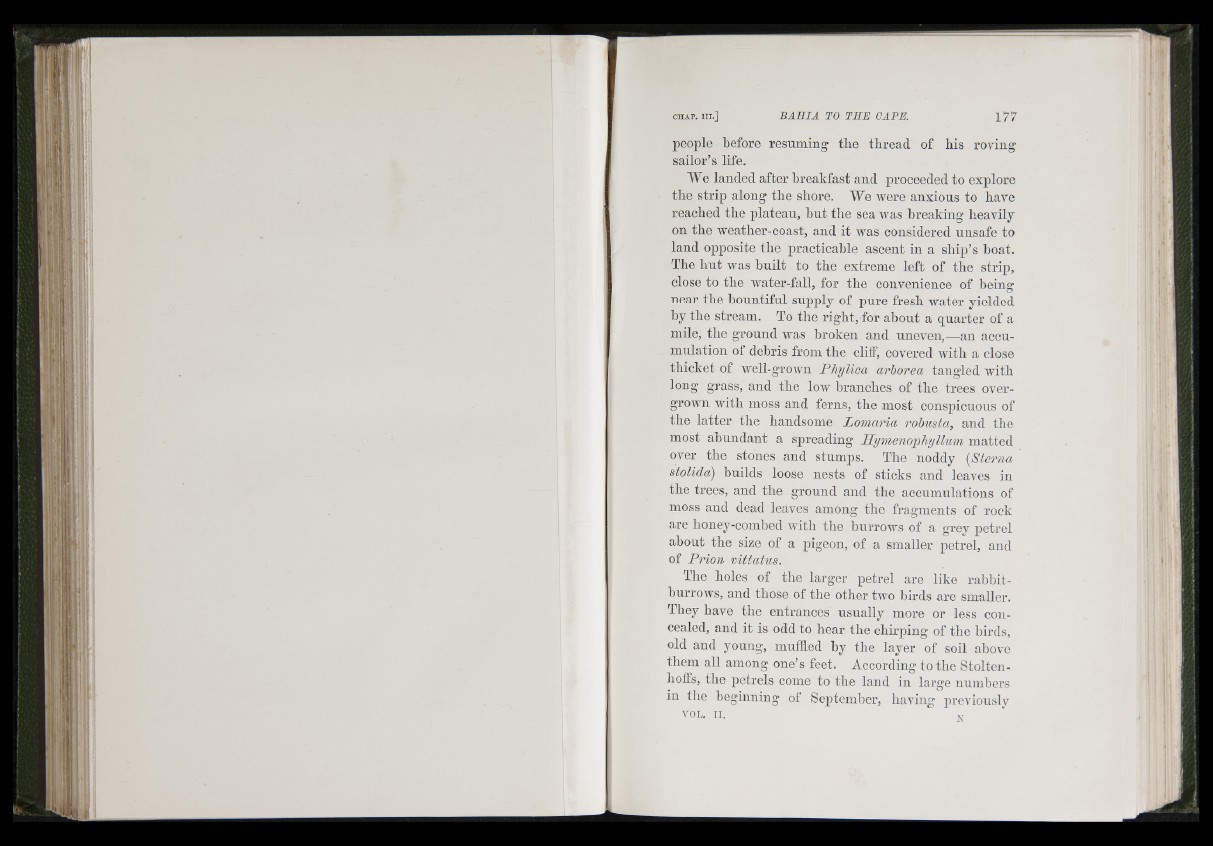
![■ !
^ I' Pi
i- .
í;.!'
h;í!!S
m i ' ..... -...j
- ' í?i s ií it 1 'i
i :J
'! :
■
y.ii -
íf
CHAP. I I I .] BABIA TO THE CAPE. 177
people before resuming the thread of his roving
sailor’s life.
We landed after breakfast and proceeded to explore
the strip along the shore. We were anxious to have
reached the plateau, hut the sea Avas breaking heavily
on the Aveather-coast, and it was considered unsafe to
land opposite the practicable ascent in a ship’s boat.
The h u t Avas built to the extreme left of the strip,
close to the Avater-fall, for the convenience of being
near the bountiful supply of pure fresh water yielded
by the stream. To the right, for about a quarter of a
mile, the ground was broken and uneven,—an accumulation
of debris from the cliff, covered Avith a close
thicket of Avell-grown Phylica arboi-ea tangled Avith
long grass, and the low branches of the trees overgrown
Avith moss and ferns, the most conspicuous of
the latter the handsome Lomaria robusta, and the
most abundant a sjireading Tlymenoptiyllmn matted
over the stones and stumps. The noddy {Sterna
stolida) builds loose nests of sticks and leaves in
the trees, and the ground and the accumulations of
moss and dead leaves among the fragments of rock
are honey-comhed Avith the burrows of a grey petrel
about the size of a pigeon, of a smaller petrel, and
of Prion vittatus.
The holes of the larger petrel are like rabbit-
burrows, and those of the other tAV'o hirds are smaller.
They have the entrances usually more or less concealed,
and it is odd to hear the chirping of the hirds,
old and young, muffled by the layer of soil above
them all among one’s feet. According to the Stoltenhoffs,
the petrels come to the land in large numbers
in tbe beginning of Sejitember, liaA'ing jAreviously
VOL. II.
* A
I:¡!\ ■
] ■ Í